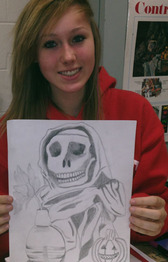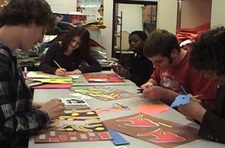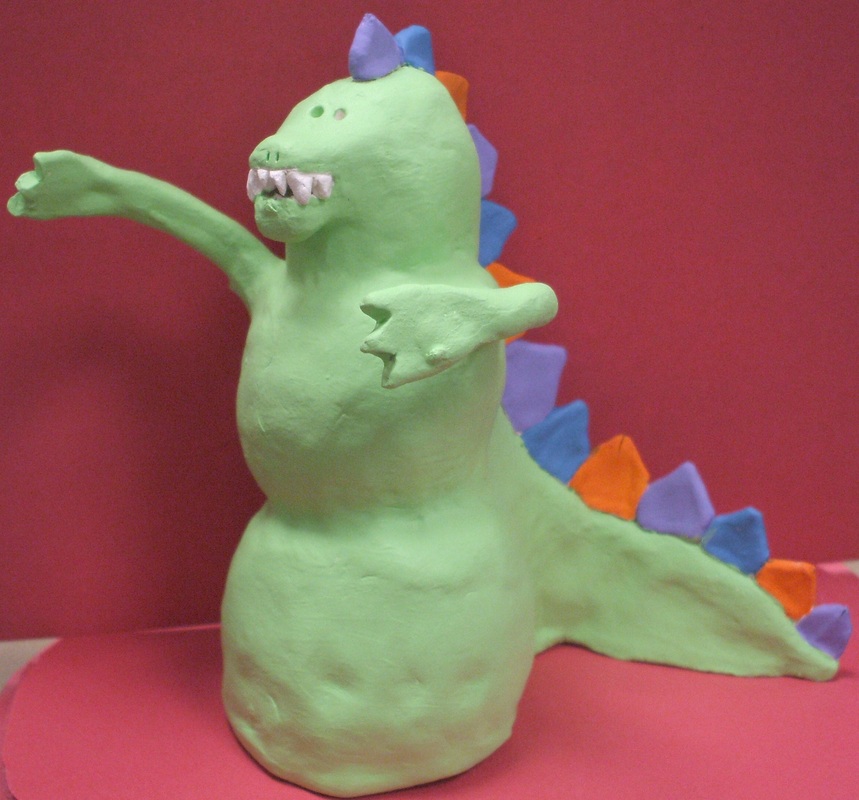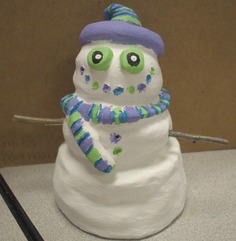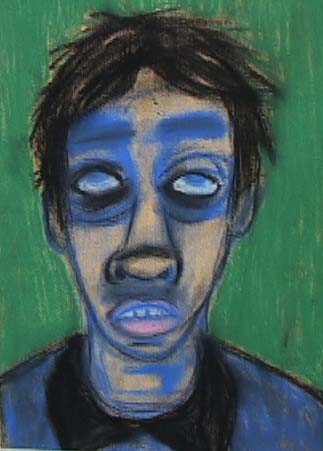- Ceramics WELCOME
- Ceramics Beginning - Syllabus
- Ceramics Begin-Photography Assignment-Student & Parent
- Ceramics & Sculpture Survey
- Ceramics Intermediate - Syllabus
- Remind101 Sign-up
- Sketchbook Assignments
- State of Michigan Michigan Standards, Benchmarks, & Grade Level Content Expect. for High School Visual Arts
- Elements of Art & Principles of Desgin
- 2-D Review - Color Theory Practice
- #1. Designs & Haiku
- #2. Quilted Ornament
- #3. 3-D Design Essay
- Rubric For Art Assignments
- Future Project Teaser Puppet Photo Gallery
- Teaching Guide
- Resources
- Art Speaks! A blogging exercise...
- Vocabulary Study Guide
- AHS ART CLUB 2014-2015
Art washes away from the soul the dust of everyday life.
Pablo Picasso
Current Courses:
General Art 2-D • General Art 3-D
Ceramics & Sculpture
Beginning, Intermediate, & Advanced,
and Advanced Painting • Art Explorations
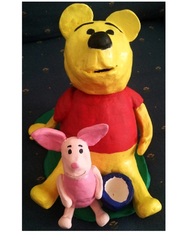
Students! Welcome to
Art Studio 61 with
Dr. Pamela Woods
Creating works of art should be both a fun and a great learning experience!
Do Your Best Work!
Art Studio 61 with
Dr. Pamela Woods
Creating works of art should be both a fun and a great learning experience!
Do Your Best Work!
Welcome to our art studio!
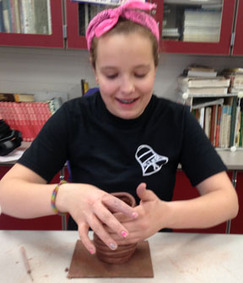
A Ceramics and Sculpture student creates a coil pot.
Welcome to my curriculum web for my art classes! We work with both two-dimensional (2-D) and three-dimensional (3-D) works of art. The difference between 3-D Art and 2-D art is simple. 2-D deals with shapes that are flat like a cookie cutter designs. These "shapes" can be created by various media (like pencil, watercolor paints, or inks) on paper. 3-D deals with forms with a fullness that can give a lifelike quality like a stuffed animal, a clay relief tile, or a sculpture.
In 3-D art we will use 2-D exercises like drawing––to help us plan for the creation of 3-D works of art by developing sketches to represent future design ideas. In order to really understand 3-D art we will also need to review "The Elements of Art" and the "Principles of Design". These two collections of organized artistic concepts are the foundation of all artistic creation. Artist explore these concepts by applying artistic choices and by using different media (media is plural of "medium" which are art materials like clay or paint) to create unique works of art.
In 3-D art we will use 2-D exercises like drawing––to help us plan for the creation of 3-D works of art by developing sketches to represent future design ideas. In order to really understand 3-D art we will also need to review "The Elements of Art" and the "Principles of Design". These two collections of organized artistic concepts are the foundation of all artistic creation. Artist explore these concepts by applying artistic choices and by using different media (media is plural of "medium" which are art materials like clay or paint) to create unique works of art.
Art Practice Makes Perfect!
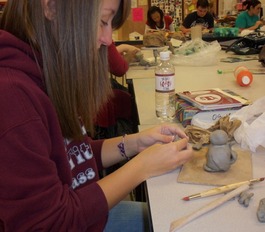
Connecting the Dots!
"The nurturing aspect of the artistic process can act as an intermediary to help all students feel a sense of connection to their learning. Such a connection, personal and affective, could lead to ongoing academic and creative curiosity and future academic and artistic success, to say nothing of for many, developing the persistence necessary to forge ahead in an art career pathway that is not readily embraced by society. Supporting the Arts supports the development of creative problem solving a skill readily applied in all walks of life".
––Dr. Pamela Woods, 2016©
All Photos by Pamela Woods, ©2016
"The nurturing aspect of the artistic process can act as an intermediary to help all students feel a sense of connection to their learning. Such a connection, personal and affective, could lead to ongoing academic and creative curiosity and future academic and artistic success, to say nothing of for many, developing the persistence necessary to forge ahead in an art career pathway that is not readily embraced by society. Supporting the Arts supports the development of creative problem solving a skill readily applied in all walks of life".
––Dr. Pamela Woods, 2016©
All Photos by Pamela Woods, ©2016
"The art studio is the place where we all create magic!"
Dr. Pamela Woods, Ed.D., Anderson High
Links for other activities are located below:
<META NAME="description" CONTENT="This is a educational website for the use of my AHS Art students only ">
<META NAME="author" CONTENT="P. Woods at [email protected]">
<META NAME="copyright" CONTENT="This group of lessons, materials, or quotes are only to be used by author and her students. If you want to use any part of the site contact the author, P. Woods at [email protected] for permission.© 2016">
<META NAME="author" CONTENT="P. Woods at [email protected]">
<META NAME="copyright" CONTENT="This group of lessons, materials, or quotes are only to be used by author and her students. If you want to use any part of the site contact the author, P. Woods at [email protected] for permission.© 2016">
